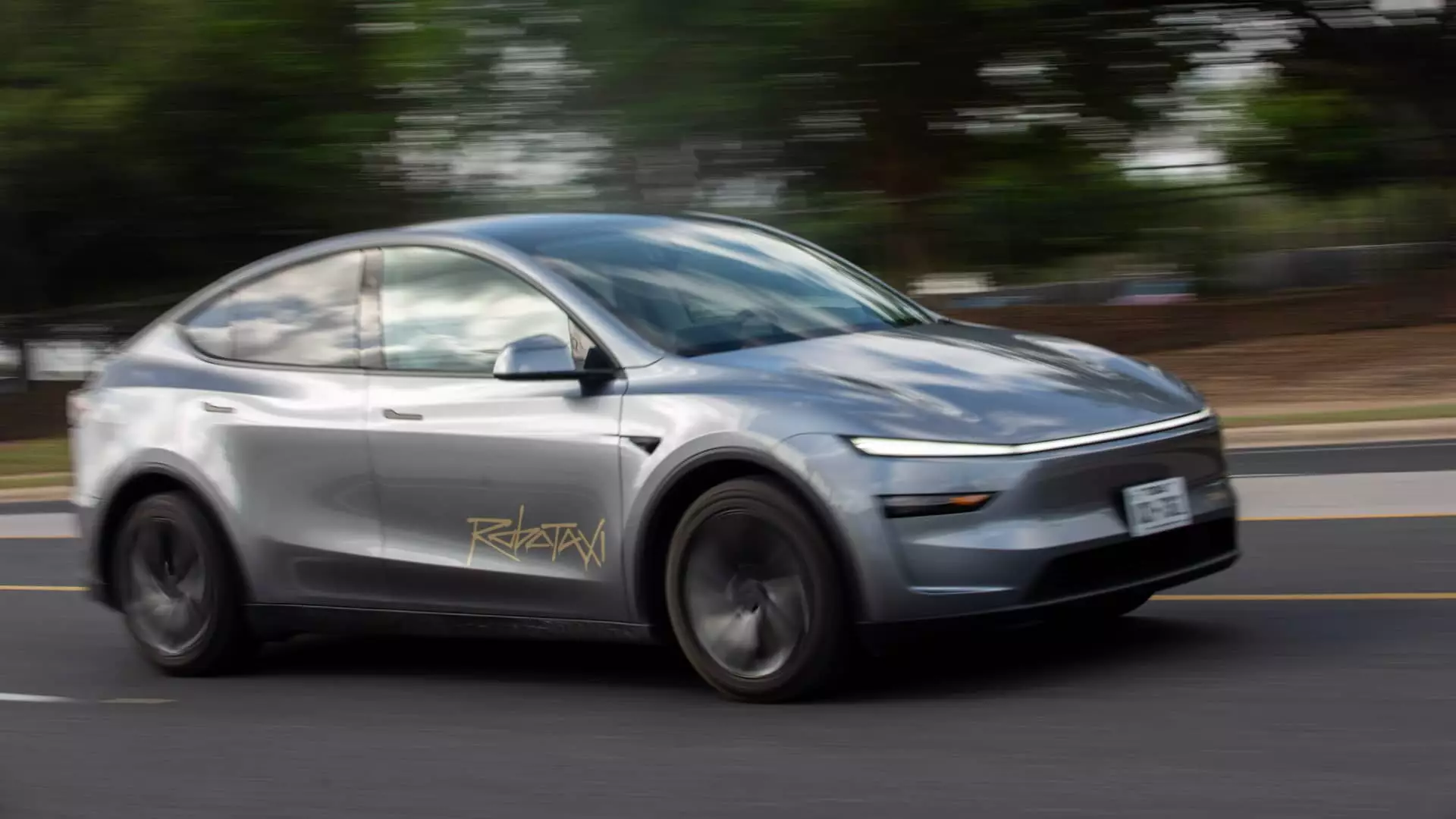Tesla CEO Elon Musk has long painted a vision of a future dominated by autonomous vehicles — a landscape where his company’s robotaxi service could revolutionize urban transportation. Recently, Musk hinted at plans for expansion into the San Francisco Bay Area, suggesting that Tesla’s autonomous ride-hailing network might soon become a reality for everyday commuters. However, beneath the optimistic rhetoric lies a sharply contrasting regulatory landscape that questions whether Tesla’s ambitions are grounded in reality or merely a high-stakes gamble. The stark truth is that California authorities, responsible for overseeing road safety and consumer protection, have set clear boundaries: Tesla cannot operate autonomous taxis carrying paying customers on public roads without a human driver present.
This regulatory disconnect reveals a broader challenge facing Tesla’s aggressive expansion plans. While Musk’s aspirational tweets and internal memos paint a picture of seamless autonomous services, the legal and safety frameworks in California impose strict limits. Tesla’s current permits restrict operations to non-commercial, driver-involved testing — a far cry from the driverless, robotaxi dream Musk promotes. The practical implications are that Tesla’s service in California will resemble a traditional taxi, with human drivers in control, rather than the fully autonomous service Musk envisions. Such disconnect raises questions about Tesla’s short-term viability and whether the company is overestimating its technological maturity or underestimating regulatory hurdles.
The Regulatory Trenches: Constraints and Contradictions
The regulatory environment in California is notably complex and cautious when it comes to autonomy and ride-hailing. The California Public Utilities Commission (CPUC) firmly states that Tesla is not authorized to test or transport the public in autonomous vehicles that lack a human driver. Permits granted to Tesla are limited to private, non-automated transport, typically in the form of shuttle services or limousine-like operations involving human drivers. The Department of Motor Vehicles (DMV), meanwhile, recognizes Tesla’s drivered testing permit — which permits the company to trial AVs under strict conditions with safety drivers present — but explicitly forbids Tesla from charging fees or offering driverless rides broadly.
This regulatory stance indicates that Tesla’s so-called “robotaxi” expansion may remain more aspirational than operational for the foreseeable future. It underscores a broader societal caution: autonomous vehicles are still viewed as experimental, and regulators remain vigilant about safety, accountability, and transparency. Tesla’s plans to serve employees’ friends and family, as authorized under its existing permit, will likely remain a constrained, limited operation rather than the disruptive service Tesla fans expect.
Moreover, Tesla’s reputation suffers from persistent issues around the transparency of its driver assistance systems. The company’s advertising, especially on social media, often blurs the lines between driver-assist features and full autonomy. Videos exemplifying users engaging FSD in hands-free mode or performing other tasks while the system is supposedly “hands-on” create a misleading perception of safety and capability — a practice the California DMV has criticized as potentially deceptive. Regulatory agencies seem increasingly wary of Tesla’s approach, which may hamper its efforts to expand autonomous ride-sharing at a meaningful scale.
The Community Impact and Transparency Gaps
Public perception and community engagement are crucial for the successful deployment of new transportation technologies. Yet, Tesla’s approach appears to lag in this regard. Local officials and residents in areas like Marin County report being kept in the dark about Tesla’s plans to deploy robotaxis, highlighting a failure to engage, inform, or seek community input. This lack of transparency can breed suspicion, resistance, and regulatory pushback — all of which threaten Tesla’s vision of a utopian mobility future.
Community leaders emphasize the importance of clear communication: residents should be aware of where, when, and how these autonomous services will operate. Without proper dialogue, the risk is that skepticism or opposition could slow down or derail deployment plans altogether. Tesla’s repeated pattern of ambitious rollouts, followed by regulatory confrontations and public outcry, suggests that Musk’s company might be underestimating the importance of community trust and the cautious prudence necessary in this highly scrutinized field.
A Dissonance Between Innovation and Regulation
Tesla’s situation highlights a fundamental tension in the evolution of autonomous vehicles: the relentless pursuit of innovation versus the cautious, safety-first stance of regulators. While Musk champions a future where robotaxis revolutionize urban mobility, the regulatory realities remain entrenched in protecting public safety. This disconnect may serve as a warning that technological advancements cannot operate in a vacuum; they require collaboration, transparency, and incremental progress within an evolving legal framework.
Tesla’s bold claims and rapid development efforts risk backfiring if they ignore the importance of regulatory compliance and public trust. Their current regulatory predicament indicates that the full realization of a driverless, robotaxi-based future is still many steps away — not because of technological failure, but because of the complex maze of rules, safety concerns, and community expectations that must be navigated carefully. Without addressing these foundational elements, Tesla’s vision may remain a distant dream, or worse, a cautionary tale of overreach in a cautious industry.

